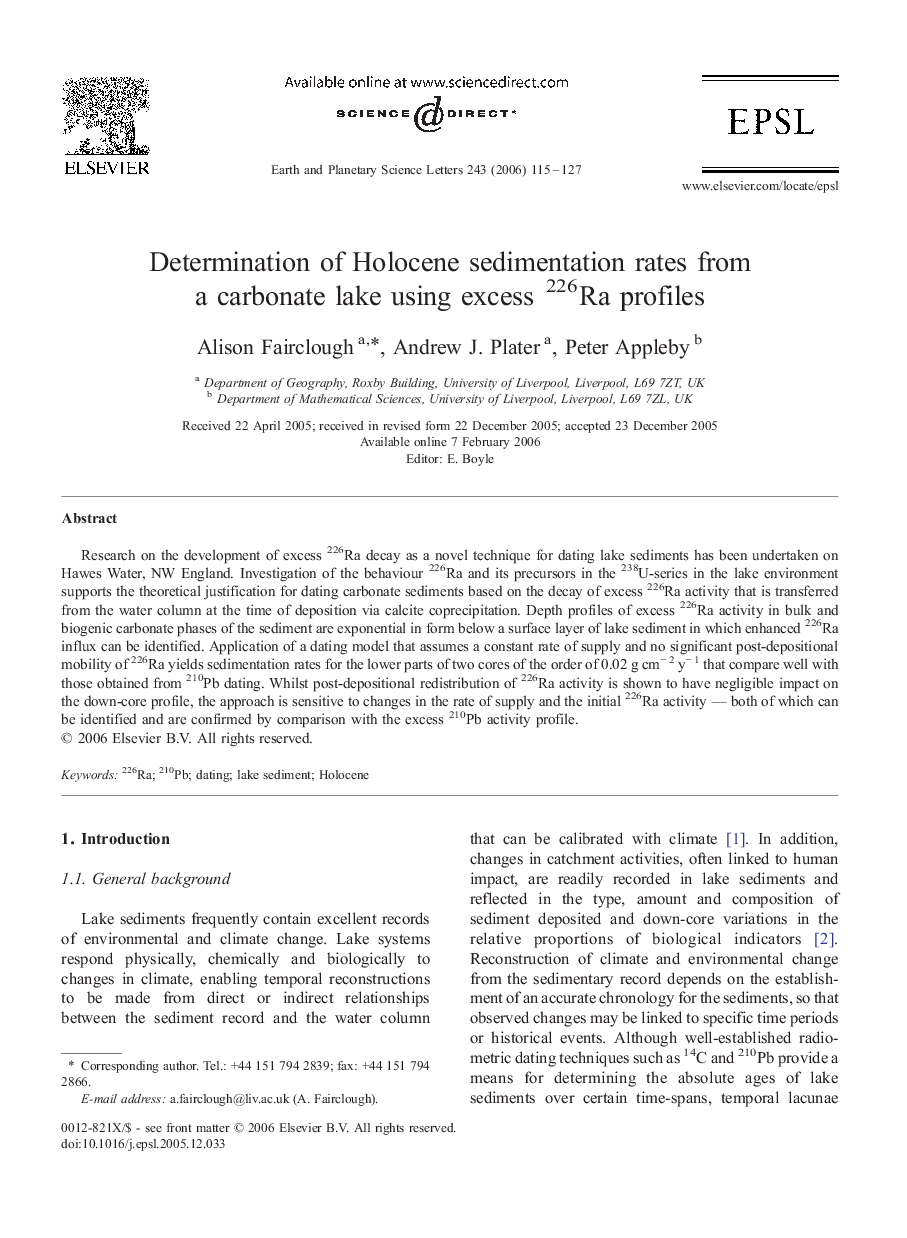| Article ID | Journal | Published Year | Pages | File Type |
|---|---|---|---|---|
| 4681163 | Earth and Planetary Science Letters | 2006 | 13 Pages |
Research on the development of excess 226Ra decay as a novel technique for dating lake sediments has been undertaken on Hawes Water, NW England. Investigation of the behaviour 226Ra and its precursors in the 238U-series in the lake environment supports the theoretical justification for dating carbonate sediments based on the decay of excess 226Ra activity that is transferred from the water column at the time of deposition via calcite coprecipitation. Depth profiles of excess 226Ra activity in bulk and biogenic carbonate phases of the sediment are exponential in form below a surface layer of lake sediment in which enhanced 226Ra influx can be identified. Application of a dating model that assumes a constant rate of supply and no significant post-depositional mobility of 226Ra yields sedimentation rates for the lower parts of two cores of the order of 0.02 g cm− 2 y− 1 that compare well with those obtained from 210Pb dating. Whilst post-depositional redistribution of 226Ra activity is shown to have negligible impact on the down-core profile, the approach is sensitive to changes in the rate of supply and the initial 226Ra activity — both of which can be identified and are confirmed by comparison with the excess 210Pb activity profile.
